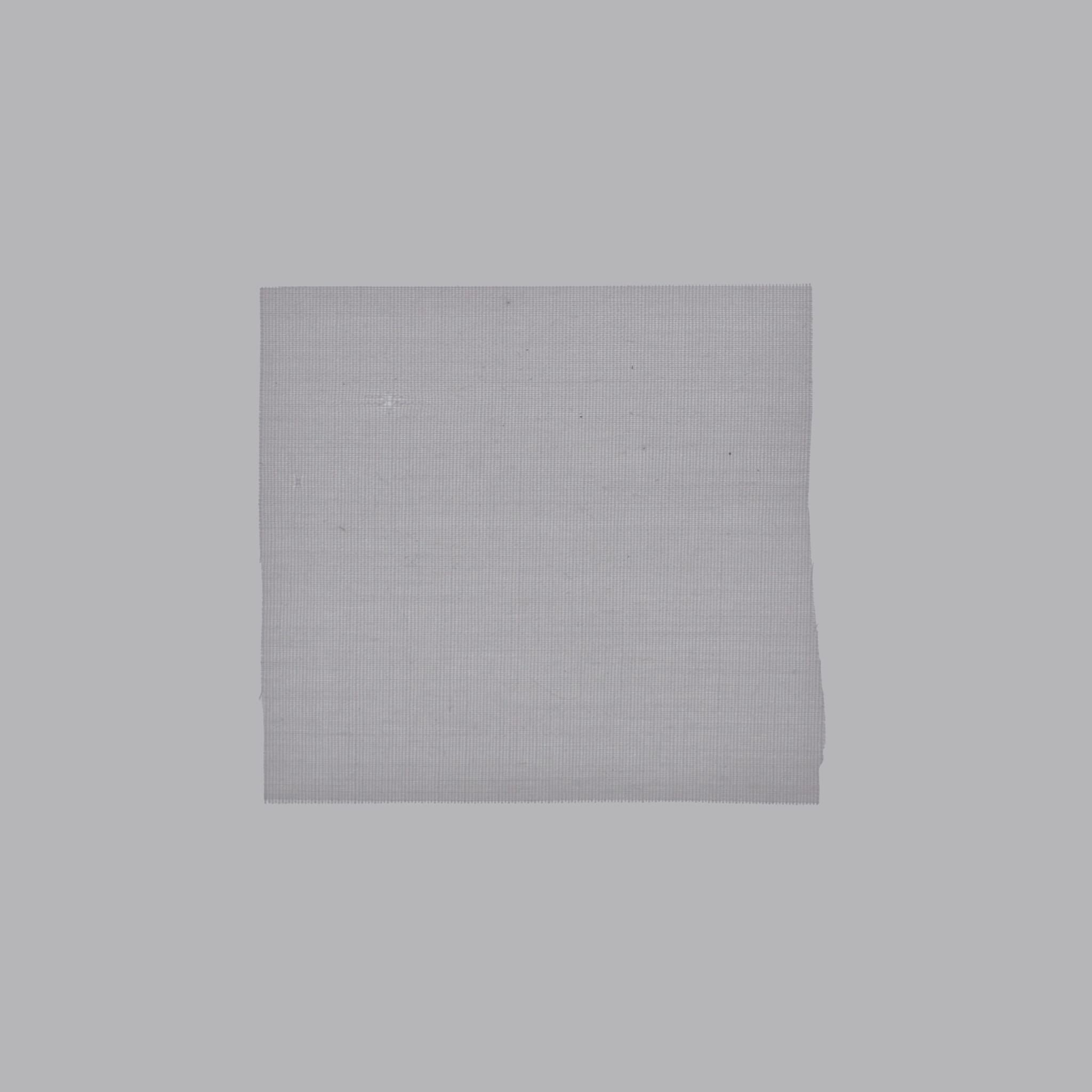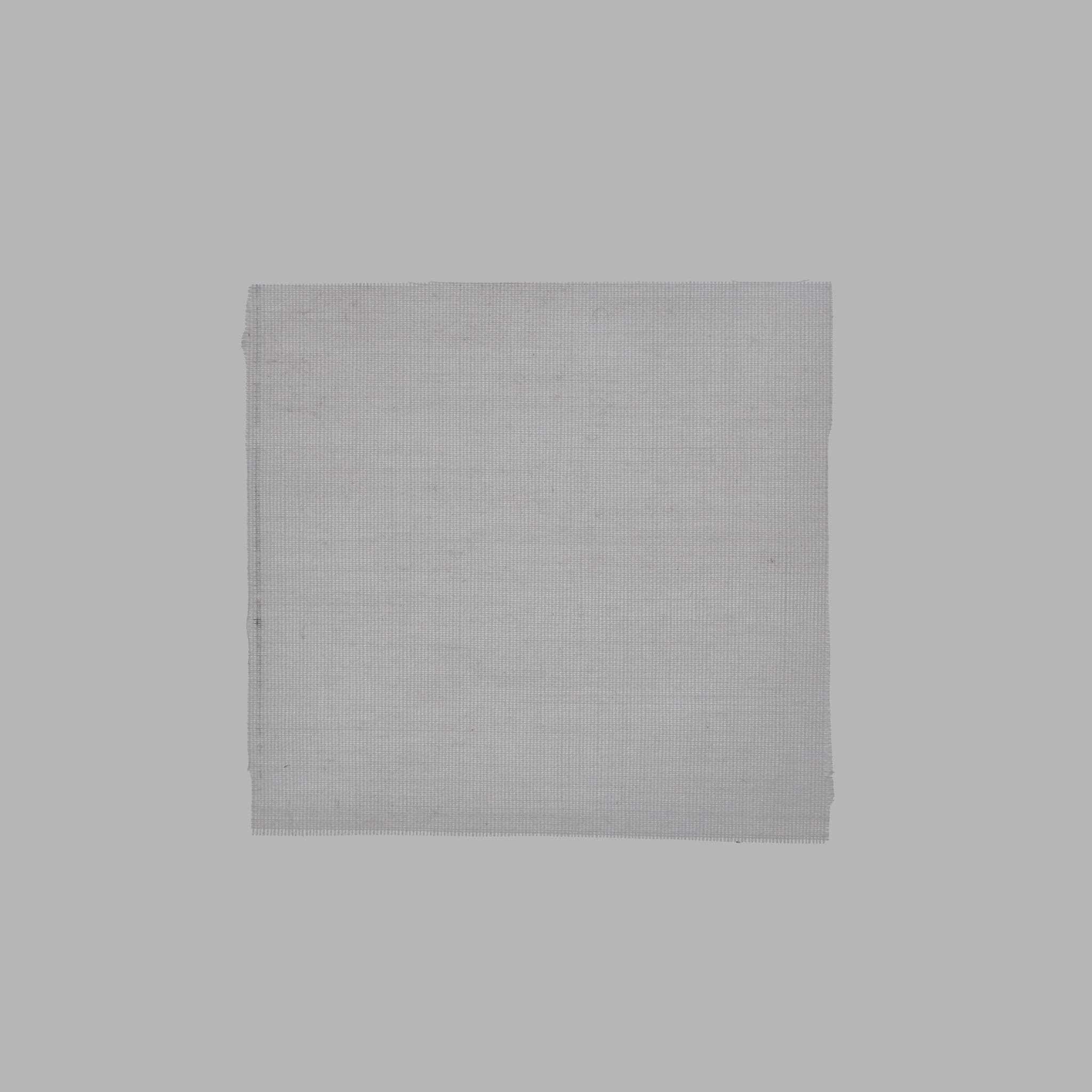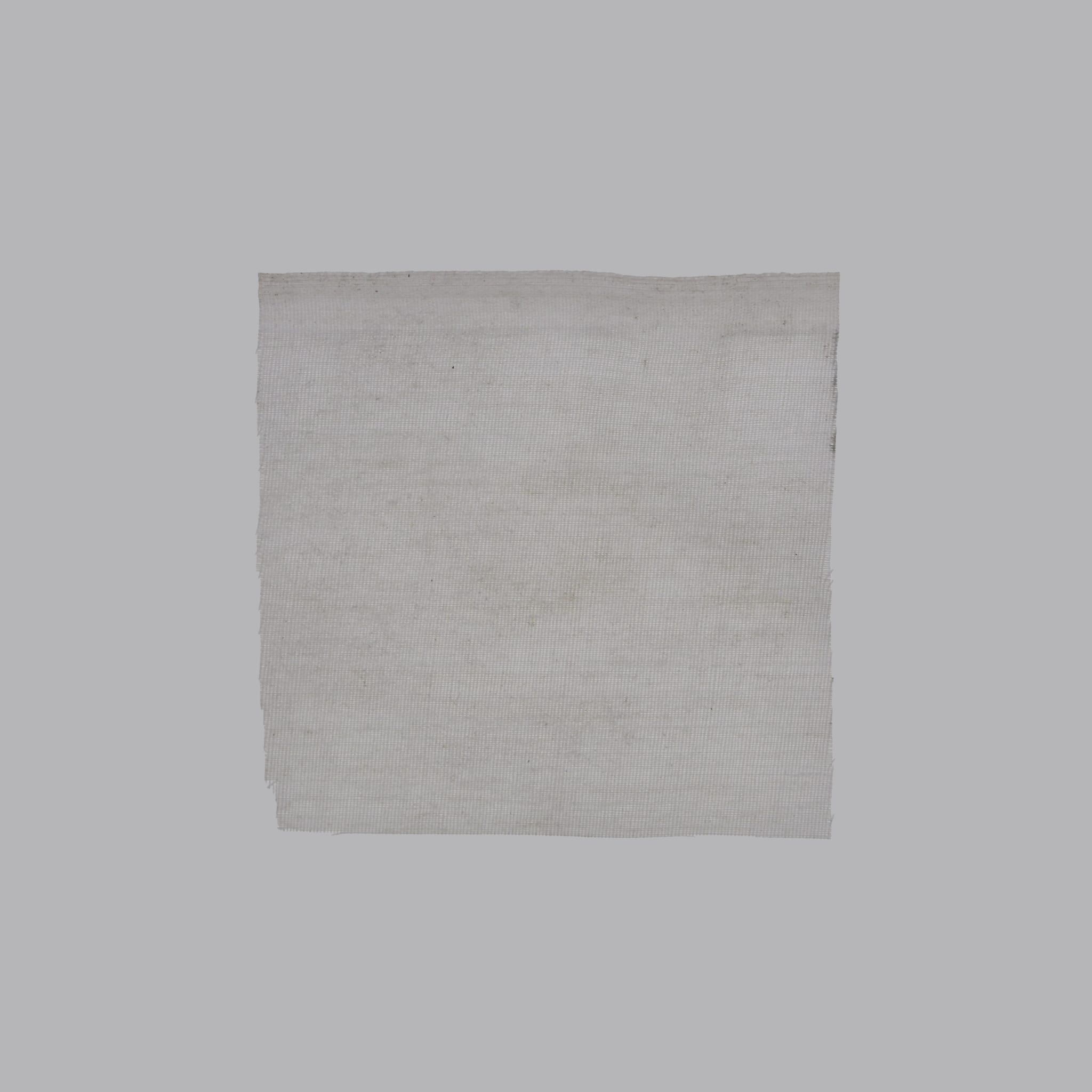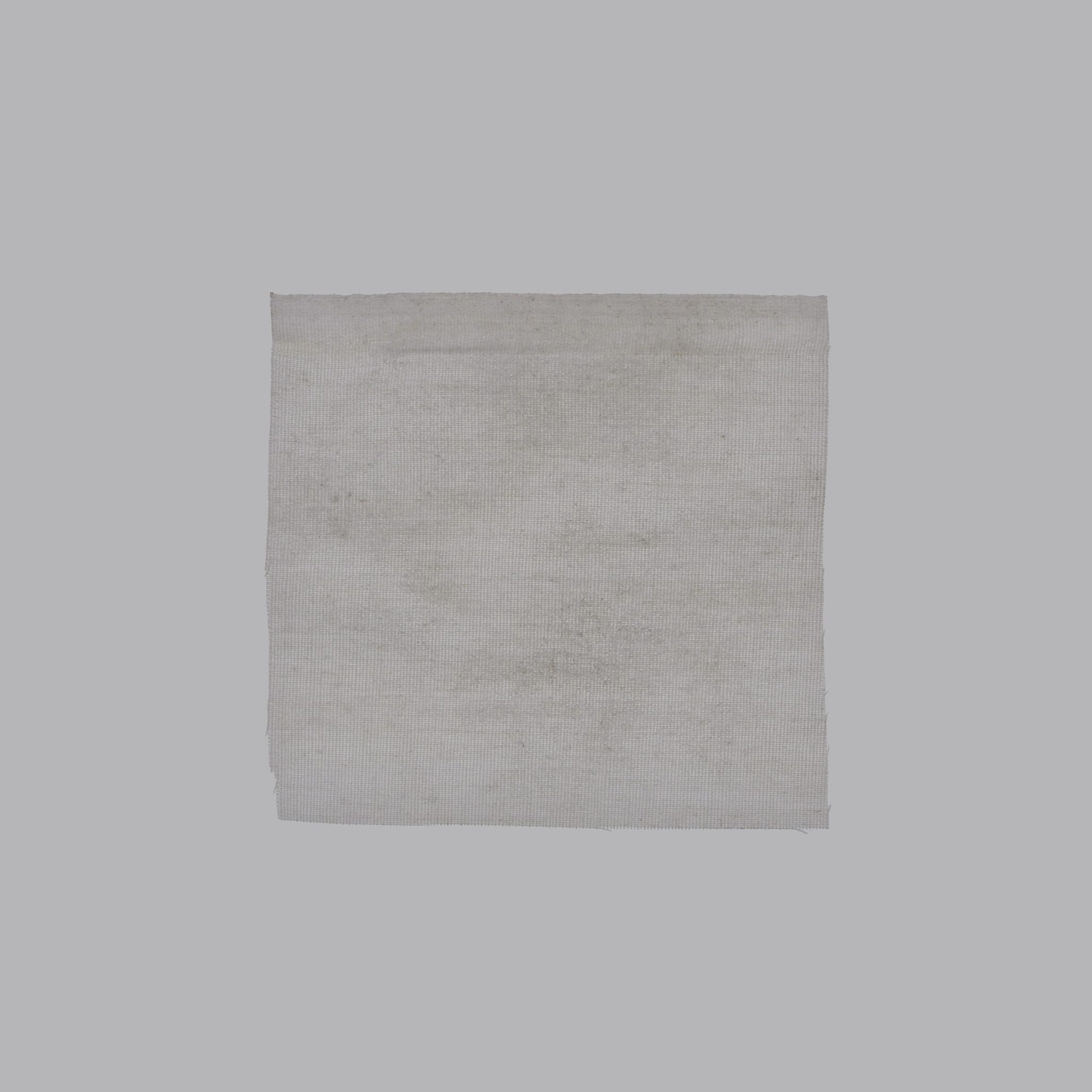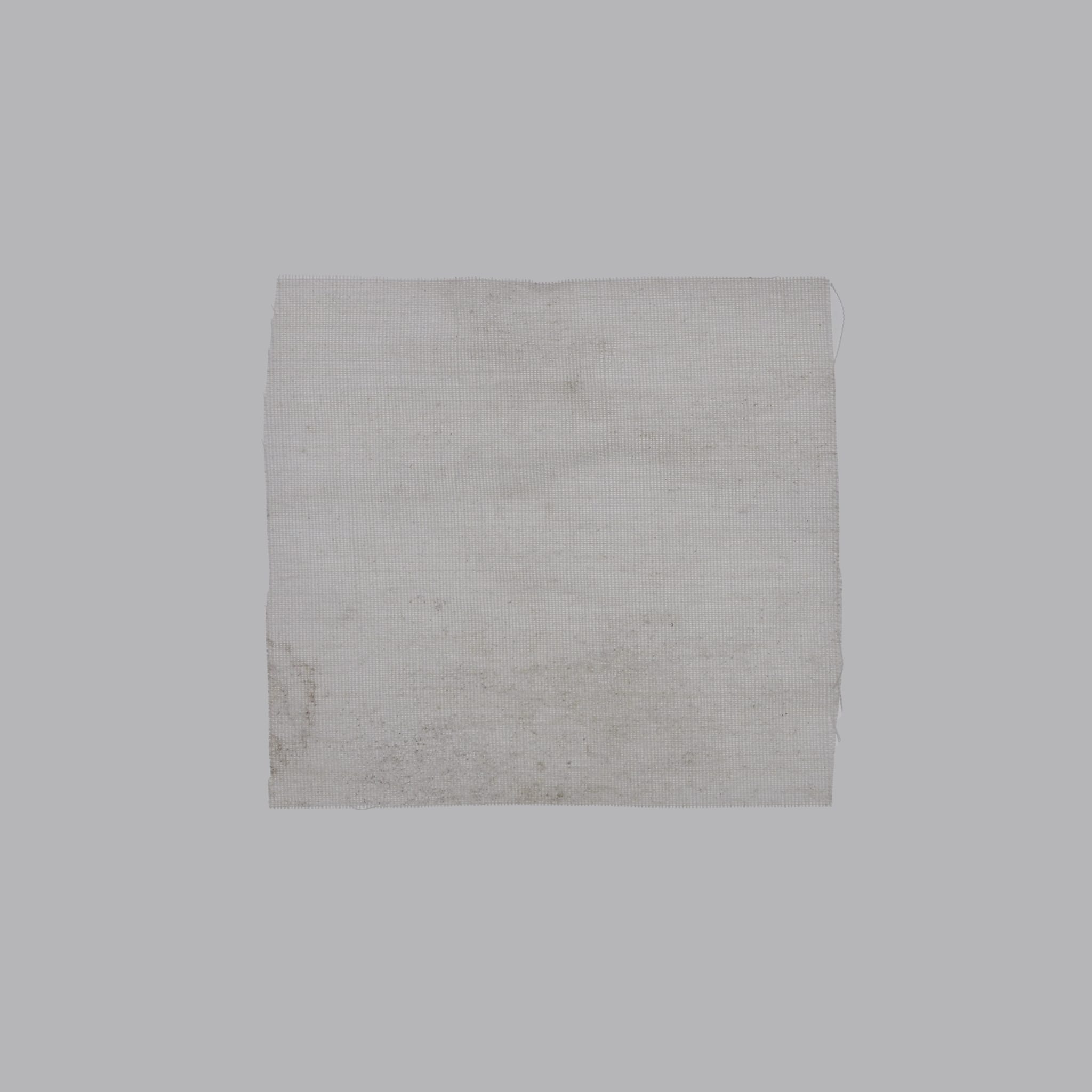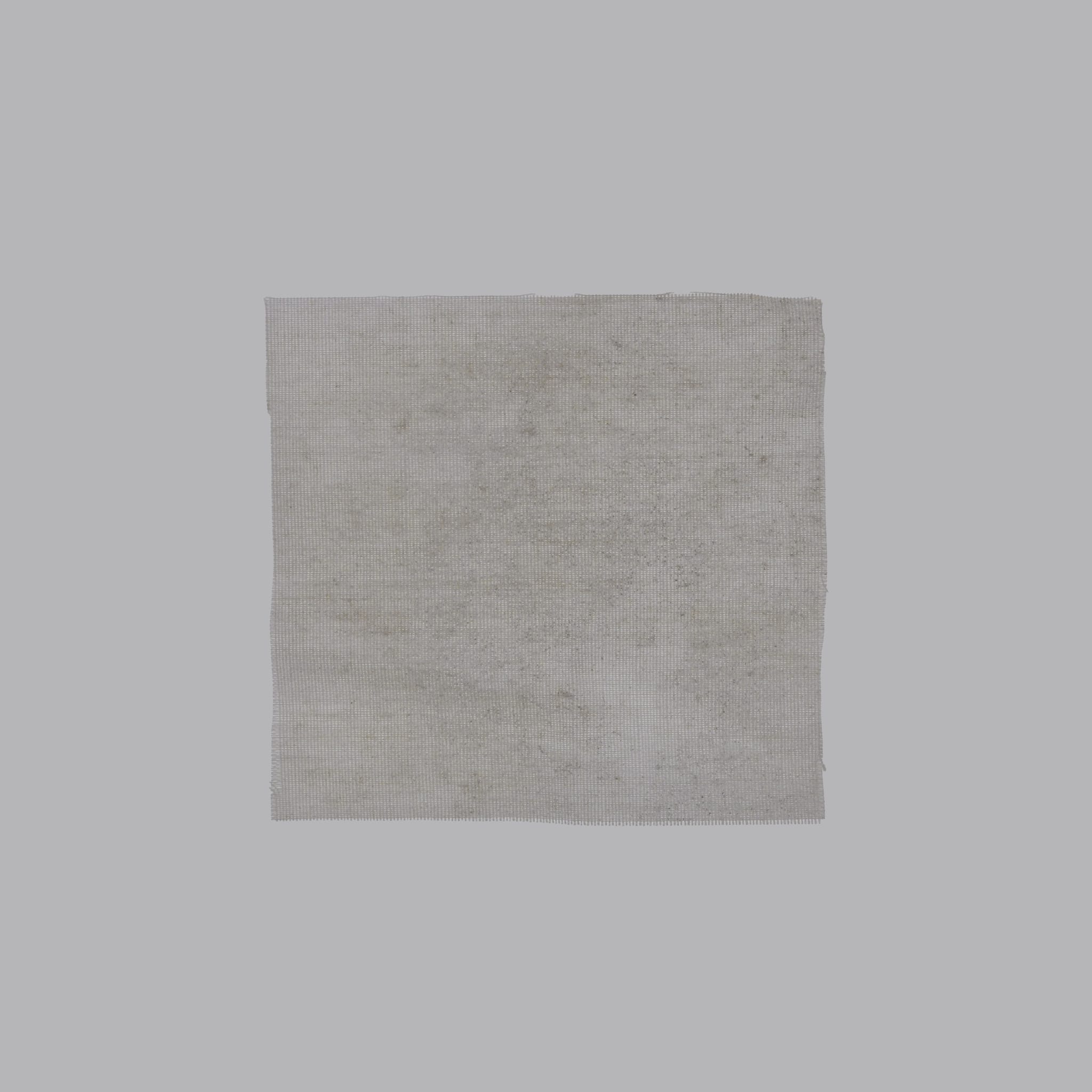ID:Polycotton 01
Start Date:03.2024 - 04.2024
Material:65% Polyester, 35% Cotton
Fibre:Blended
Temperature:30°C
Sample Size:75x75
Notes:
Original colour: White
Weight of original sample: 0.35g
More about polycotton:
Many textile products are made from blended yarn fabrics, as the most common is polyester and cotton blends - named polycotton. These are amongst the cheapest and most common fabric used for clothing and domestic use.
Properties
Polycotton utilises the softness and absorbency of cotton fibres, together with the durability, light weight, and crease proofness of polyester - a synthetic fibre.
Decomposition
According to some sources, polyester - a synthetic fabric, will take around 20 to 200 years to decompose, though throughout its end of life it'll most likely break down into microplastics.
Cotton, on the other hand decomposes steadily, under controlled environment withing a month. This contrast, however, wasn't reflected in this experiment. The samples stayed consistent, without any weight reduction.
Seperating blended fibres
A mechanical separation of waste polyester/cotton blended fabric into its constituents is almost impossible since the polyester and the cellulose fibres are completely mixed in the yarn in the fabrics and cannot be separated mechanically. Chemical treatment would be possible, which involves dissolving or depolymerizing one of the fibre components while maintaining the other. Although several concepts have been reported in the literature, this methodology has also its shortcomings. Dissolving polyester from the blended fabrics is currently not economical and environmentally feasible since the polyester can be dissolved by only a few solvents which are both expensive and toxic.
Sources:
Baghaei, B., Compiet, S. and Skrifvars, M. (2020) ‘Mechanical properties of all-cellulose composites from end-of-life textiles’, Journal of Polymer Research, 27(9). doi:10.1007/s10965-020-02214-1.
